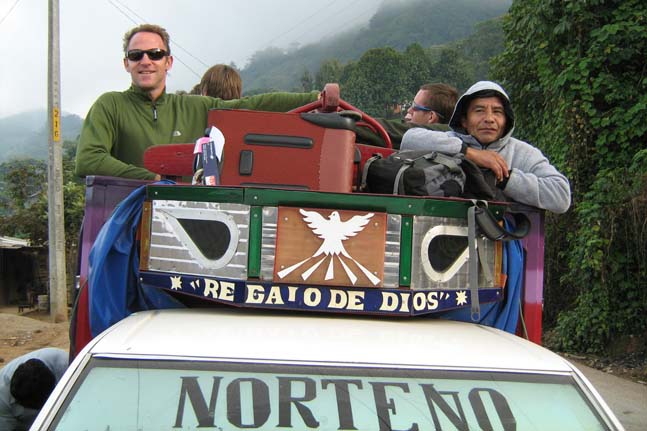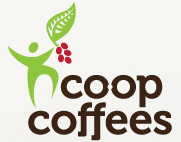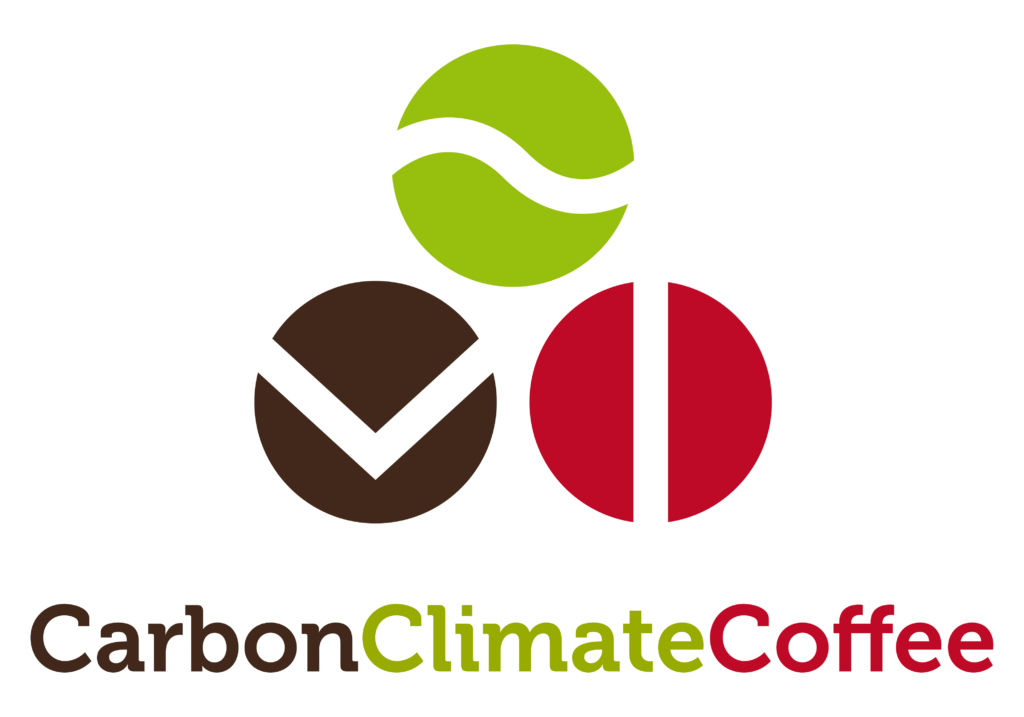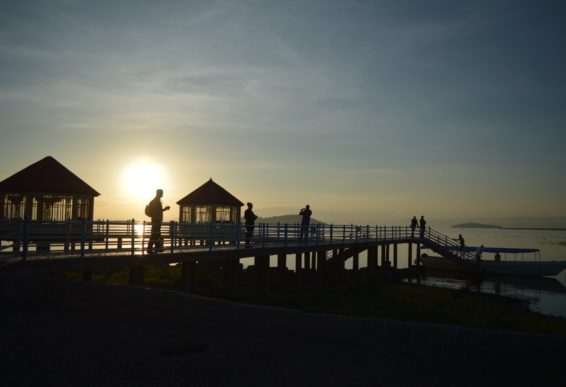
Ethiopia is the leading African nation in soil loss and degradation and, according to FAO country assessments, the resulting vulnerability to drought, crop failure and famine. Following the COP21, the Ethiopian government made an ambitious commitment to revitalize some 15 million hectares of land as part of the World Resources Center’s African Forest Landscape Restoration Initiative (AFR100). AFR100 is a multinational and multilateral agreement aiming to revitalize at least 100 million hectares of land in across the African Continent.
As part of the CoopCoffees Carbon, Climate and Coffee initiative and in collaboration with our producer partners at Sidama Coffee Farmers Cooperative Union (SCFCU) – we hope that our enhanced composting workshop will be a good, healthy step in the right direction!
Our Ethiopian soil regeneration adventure began with Soil & More Ethiopia, near the banks of Lake Ziway, and a visit to their impressive compost production headquarters. The 18.5-hectare landholding, a former municipal dump-site, is being transformed into a veritable oasis after just four short years of intensive compost production and application.
Where once there was barbed wire fencing, now stand rows of avocado, papaya, Moringa oleifera, cherimoya, neem, grevillea and other native trees that comply with at least one of Soil  & More’s “4Fs” criteria — Fencing, Firewood, Fodder and/or Fruit — to form a “living boundary” around the property. The soil is now teeming with life, and the surrounding areas are sprouting with grasses and ground-cover. Soil & More Ethiopia Director Hussen Ahmed said their reforestation goal is to plant at least 50 different varieties of fruit and forage trees throughout the property.
& More’s “4Fs” criteria — Fencing, Firewood, Fodder and/or Fruit — to form a “living boundary” around the property. The soil is now teeming with life, and the surrounding areas are sprouting with grasses and ground-cover. Soil & More Ethiopia Director Hussen Ahmed said their reforestation goal is to plant at least 50 different varieties of fruit and forage trees throughout the property.
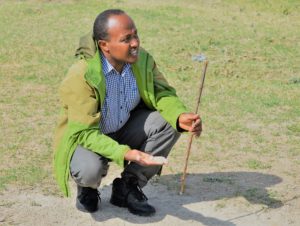 Touring the land with Ahmed, we saw a few spots that were still “in recovery.” The contrast impressed us all the more, seeing how damaged the soil was before any regenerative work had begun. “When we arrived, the soil was white and sandy, like you see here,” Ahmed explained. “You would have thought that nothing could grow in this… but as you can see, we’re changing that!”
Touring the land with Ahmed, we saw a few spots that were still “in recovery.” The contrast impressed us all the more, seeing how damaged the soil was before any regenerative work had begun. “When we arrived, the soil was white and sandy, like you see here,” Ahmed explained. “You would have thought that nothing could grow in this… but as you can see, we’re changing that!”
Soil & More Ethiopia is now producing some 250,000 tons of compost annually in long “windrows” for local application and for commercial sale. In addition, they’re developing an experimental farm and hands-on learning center, with vegetable field trials, greenhouse production, vermi-composting, aquaculture and animal husbandry. Soil & More Ethiopia also offers offsite technical assistance… which is where we came in!
With the support and partnership of Soil & More Ethiopia and SCFCU, we were able to facilitate and sponsor a week-long visit and workshop on soils, composting and productivity with some 30 SCFCU producer representatives from Fero, Telamo, Taramesa and Shilicho cooperatives. We were joined by Elise St. Pierre, a Montreal-based biologist specializing in soils and biochar, Kevin Walters, co-owner of Alternative Grounds and BoD member of CoopCoffees, and European coffee colleagues from Roasters United.
The primary objectives of this first-of-its-kind workshop in the Sidama Region, included: hands-on learning, a shared understanding about the role of beneficial micro-organisms essential to healthy soil, the on-site construction of a 5 x 15 meter compost windrow, and the application of “regenerative” organic farming practices in farmers’ fields.
Launching into the workshop at Furra Institute in Yirgalem – Ahmed described the challenges facing Ethiopian soils, the necessary elements for swift soil recovery and the basic steps to creating and the precautions to maintaining well-balanced compost to benefit the micro-biological life in the soil.
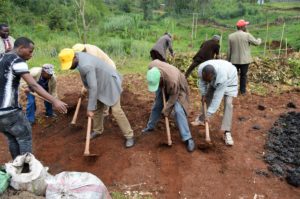 By the second day, we were ready to put the theory into practice. And everyone seemed eager to get their hands and backs into the process. Farmers jumped at the few available hoes and shovels in order to level the designated space for the compost windrow and gathered armloads of nitrogen rich green materials, ideal for cultivating beneficial bacteria.
By the second day, we were ready to put the theory into practice. And everyone seemed eager to get their hands and backs into the process. Farmers jumped at the few available hoes and shovels in order to level the designated space for the compost windrow and gathered armloads of nitrogen rich green materials, ideal for cultivating beneficial bacteria.
 Farmer representatives and staff from Soil & More had been gathering the compost materials for days, but additional dry materials were still coming in by the armloads the day of the workshop to add to the pile. Ideally we would have had some 40 percent of the total mass in dry materials to feed the beneficial fungal life (mycelium) that is so critical to balanced decomposition.
Farmer representatives and staff from Soil & More had been gathering the compost materials for days, but additional dry materials were still coming in by the armloads the day of the workshop to add to the pile. Ideally we would have had some 40 percent of the total mass in dry materials to feed the beneficial fungal life (mycelium) that is so critical to balanced decomposition.
 One of our burning questions during the days just prior to this workshop was: “Where’s the manure!?!” Few of the participating farmers have more than one cow or a donkey, so a reliable source of animal manure was not guaranteed. You can’t imagine our delight when we saw this “just-in-time” delivery, as we were layering out the materials of our compost row!
One of our burning questions during the days just prior to this workshop was: “Where’s the manure!?!” Few of the participating farmers have more than one cow or a donkey, so a reliable source of animal manure was not guaranteed. You can’t imagine our delight when we saw this “just-in-time” delivery, as we were layering out the materials of our compost row!
During our initial conversations with farmer representatives, we heard all about their need for better tools. Wheel-barrels, better blades for chopping or a mechanical shredder would make an enormous difference in their capacity to collect and prepare the compost materials. Over the course of this workshop, we saw first hand the extent to which Ethiopian farmers encounter challenges at each step in the process. A lack of reliable technical information, inadequate tools, and insufficient basic materials and supplies, made this simple process seem almost insurmountable. For example, “compost fleece” – a basic, but very particular fabric designed to control the humidity of unprotected compost piles exposed to heat evaporation and water-logging in case of rain – is all but impossible to source in the country. Sold in enormous 5 by 50 meter rolls here in Quebec and in Europe, one of our pre-departure tasks was to source and carry as much of this material as possible.
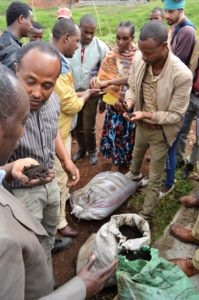 But now – just one short workshop later – things are looking up. Having discovered an incredible, local resource for technical know-how and innovation with Soil & More, with 30 recently-converted composting disciples, with some 40 meters of remaining compost fleece on site, and with clean barrels, shovels and vegetation shredding tools en route… we may be on the cusp of “new dawn” for enhanced composting and soil regeneration in the Southern Nations region of Sidama!
But now – just one short workshop later – things are looking up. Having discovered an incredible, local resource for technical know-how and innovation with Soil & More, with 30 recently-converted composting disciples, with some 40 meters of remaining compost fleece on site, and with clean barrels, shovels and vegetation shredding tools en route… we may be on the cusp of “new dawn” for enhanced composting and soil regeneration in the Southern Nations region of Sidama!
Author: Monika Firl
June 27, 2017




